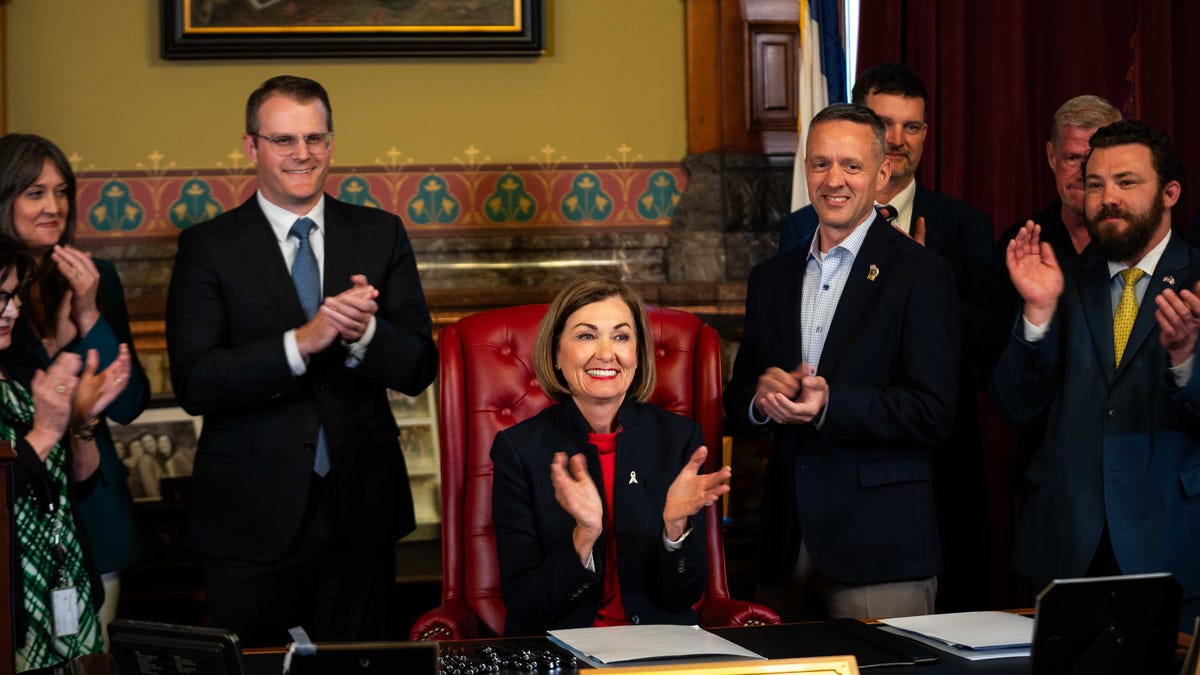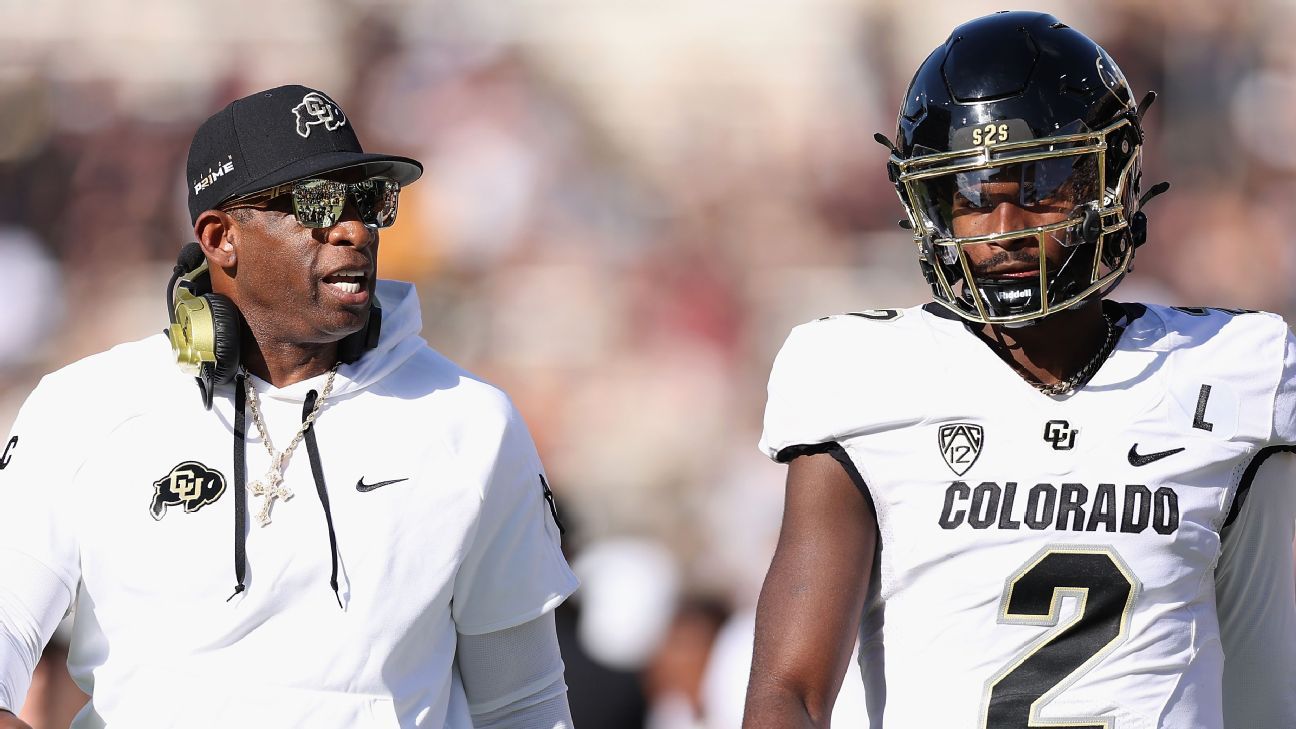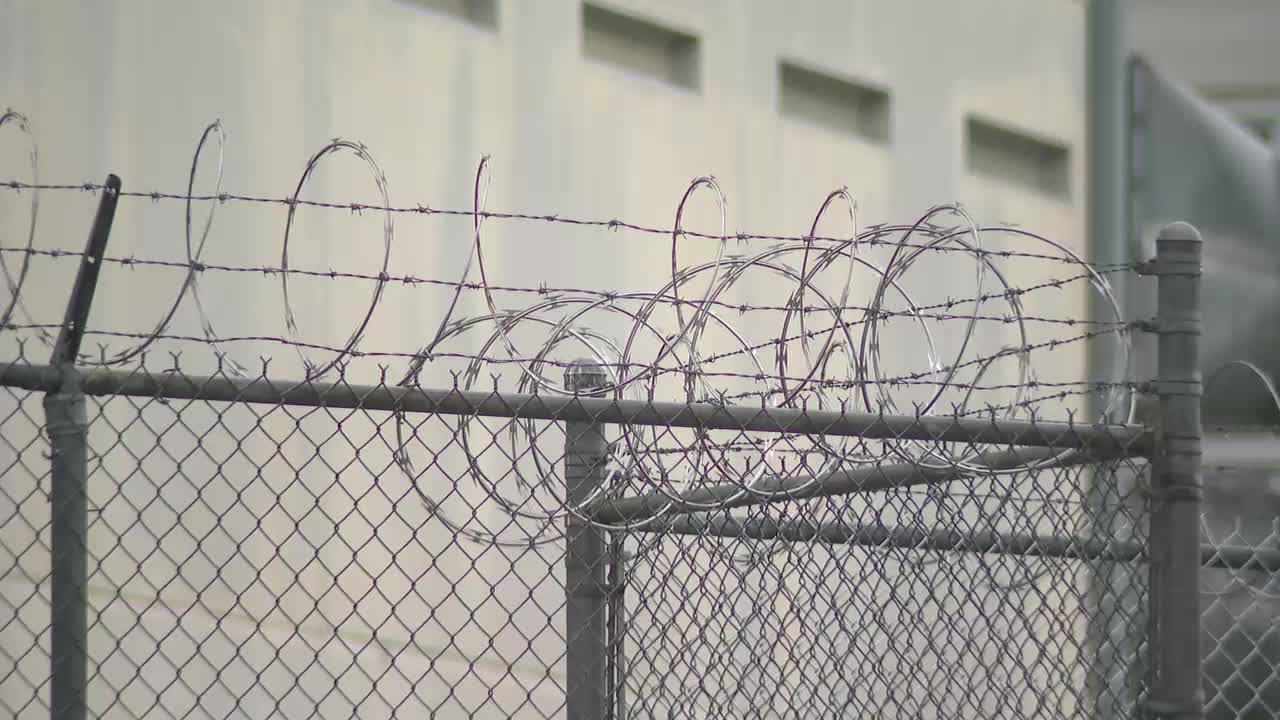Midwest
Former Chicago Mayor Lori Lightfoot hired to investigate so-called 'worst mayor in America' at $400 an hour

The Village of Dolton in Illinois voted Monday to hire former Chicago Mayor Lori Lightfoot as a “Special Investigator” to look into Dolton Mayor Tiffany Henyard.
Starting Tuesday, Lightfoot will be paid $400 an hour to gather information on Henyard’s alleged spending and finance mismanagement as well as “any state and federal violations.”
Ahead of Monday’s vote, Lightfoot said she understood the residents want to go in a different direction from Henyard, and promised to “follow the facts where they lead.”
L-R: Former Chicago Mayor Lori Lightfoot and Dolton Mayor Tiffany Henyard. (Getty Images/Village of Dolton)
At the end of her investigation, Lightfoot will present a report to the Village of Dolton on her findings. The findings in the report will determine what happens beyond that.
Trustees also re-voted on issues the Dolton mayor had previously vetoed and about paying vendors and invoices that have not yet been paid by the Village.
FORMER EMPLOYEE SUING ‘NARCISSITIC’ MAYOR, CLAIMS SHE WAS LOCKED OUT OF OFFICE, DENIED PAY AND FIRED
Monday’s vote was held off-site, at the Park District building since it wasn’t an official Village Board meeting. It was also moved there to accommodate residents who wanted to attend.
The Village of Dolton, Illinois’ monthly town hall meeting once again made headlines last week for fiery confrontations with the scandal-ridden mayor.
Henyard has been accused of misdeeds ranging from weaponizing police in retaliatory business raids to spending taxpayer money on luxuries like traveling to Las Vegas. Last month, Henyard reportedly vetoed the board’s resolution to probe her spending over purported misuse of funds.
While the FBI has allegedly already begun to investigate Henyard for purportedly misusing her local police force, the board’s resolution had called for the FBI to do further investigation into her spending of the town’s money.
Read the full article from Here

Illinois
First West Nile virus case detected in Illinois in 2024: Bird in Douglas County tests positive

DOUGLAS COUNTY, Ill. – The first bird to test positive for West Nile virus in Illinois this year has been confirmed in Douglas County.
The Illinois Department of Public Health announced the case on Wednesday. The bird was collected by Douglas County health officials on April 2 in Villa Grove.
“The news of the first bird with West Nile virus so early in the season is a signal for Illinois residents to begin protecting themselves – and their horses – from vector-borne diseases,” said IDPH Director Dr. Sameer Vohra. “We urge everyone — and especially older people and those with weakened immune systems — to take precautions to protect themselves and their families from mosquitoes and the viruses they carry by wearing insect repellent and eliminating standing water around their home where mosquitoes breed. Please ‘Fight the Bite’ by practicing the three R’s – reduce, repel, and report.”
The virus can be passed on through a mosquito bite, after a mosquito has picked up the virus from an infected bird, according to the IDPH.
Symptoms to look out for include fever, nausea, headache and muscle aches and they can last anywhere from a few days to a few weeks.
Most people who become ill with the virus don’t show any symptoms. However, in rare cases, some may become severely ill and contract meningitis, encephalitis, or death.
Illinois health officials are monitoring possible cases of West Nile virus by testing mosquito batches, dead birds, sick horses and humans who exhibit symptoms of the virus.
If you see a sick or dead crow, blue jay, robin or other perching bird, you’re urged to contact your local county or city health department.
Last year, there were 119 cases of West Nile virus in humans and six deaths in Illinois, according to health officials. In 2022, there were 33 human cases and seven deaths.
To learn more about the West Nile virus, follow this link.
Indiana
How a Gaza protest at Indiana University became a battle for free speech

The sun was casting shadows onto the green grass of Dunn Meadow at Indiana University Bloomington, as a line of police carrying batons and shields moved forward.
Across from the police stood a daisy chain of protesters, their arms linked in front of a newly established pro-Palestine encampment. The cluster of tents resembled dozens of other encampments set up at universities across the United States in recent weeks, as demonstrations against Israel’s war in Gaza reached a fever pitch.
College campuses in the US have long been bastions of academic freedom and political protest, and Indiana University was no exception. For 55 years, Dunn Meadow had been its designated “assembly ground”, an area the university itself described as a “public forum for expression on all subjects”.
But that changed on April 24, as university administrators swiftly revised policies that had been on the books since 1969.
While the university had previously allowed “the use of signs, symbols or structures” for protests on the meadow, the change banned temporary structures without prior approval. The very next day, police appeared to dismantle the encampment — and arrest students.
The move catapulted Indiana University to the forefront of a heated debate: Are those protesting the war in Gaza facing disproportionate challenges to their rights to free speech and expression?
“Students and faculty and community members have gathered at this meadow for decades, and it has never been met with this,” said Benjamin Robinson, a professor of Germanic studies at the university who joined the protesters on April 25.
He was ultimately arrested, along with about 50 other demonstrators, all of whom received an immediate year-long ban from campus.
“Now I’m seeing this militarised, overwhelming, disproportionate show of force,” Robinson told Al Jazeera. “It makes you wonder: Why this time? Why is this time different?”
Possible ‘viewpoint bias’
The right to free speech is a cherished cultural ideal in the US, enshrined prominently in the First Amendment of the Constitution.
But the war in Gaza — and the protest movement it has inspired — has brought to the fore questions of where that freedom ends. Student protesters have taken aim at their schools’ ties to Israel, and even at the US government for its continued material and political support for the war.
How those protests are unfolding on college campuses has proven particularly thorny. Several high-profile administrators have argued that certain students, particularly those of Israeli and Jewish backgrounds, may feel targeted by the anti-war protests. They maintained dismantling the encampments is essential to creating a safe learning environment.
But some students, faculty and advocates say the attempts to dismantle the camps reveal biases about whose voices are prioritised on campus — and whose are blocked.
Alex Morey, the vice president of campus advocacy at the Foundation for Individuals Rights and Expression (FIRE), said a swift policy change like the one enacted at Indiana University — in an apparent response to a particular protest — “raises all the red flags and screams viewpoint discrimination”.
She told Al Jazeera that FIRE is currently monitoring about 10 instances of schools shifting their policies since the war started in a way that may be discriminatory.
The American Civil Liberties Union (ACLU) also voiced concerns about the Indiana University policy change in the aftermath of last week’s arrests.
The president of the state ACLU chapter, Chris Daley, called it “alarming” that decades-old “policy would be specifically changed on the morning of, and in response to, a planned protest against the State of Israel’s treatment of Palestinians”.
At least 34,568 Palestinians have been killed in Israel’s offensive in Gaza, and rights groups have said the Palestinian enclave is on the verge of famine, as Israel’s siege approaches its ninth month.
Violent arrests
How administrators choose to respond to protests and cases of civil disobedience — defined as nonviolent acts where a law or policy is intentionally broken — can have wide-ranging implications.
Images of violent arrests have become common since the latest surge in university protests and encampments began. To date, more than 1,000 arrests have been recorded across 25 US campuses, according to CNN.
Columbia University in New York City is often understood as the epicentre for the current encampment movement: Its students started erecting tents on April 17, as part of a campaign to push the school to divest from Israel.
But the university’s reaction has set the tone for crackdowns across the country. The next day, Columbia called in the New York Police Department (NYPD), arresting more than 100 protesters.
Critics said the decision escalated an already tense situation. Arrests have since continued, with more than 282 additional students detained at Columbia and the City College of New York by Wednesday morning.
Scenes of police violence against faculty members and students at Emory University in Atlanta, Georgia, and the University of Texas at Austin have stoked further anger.
The Austin campus is a state school — and critics have pointed out that restrictions of free speech there could teeter into government censorship.
Nevertheless, Texas Governor Greg Abbott, a self-styled free speech crusader and prominent Republican, decided to send state troopers onto the University of Texas campus on April 24, resulting in more than 50 arrests.
Morey at FIRE noted that Abbott issued an executive order in March requiring universities to update their free speech policies to respond to what he characterised as “the sharp rise in anti-Semitic speech and acts on university campuses”.
That, she said, could be seen as another example of “viewpoint discrimination” — favouring one point of view over another. Even right-wing libertarians have denounced the decision as a form of hypocrisy.
Former Congressman Justin Amash, for instance, wrote on the social media platform X: “If [Abbott’s] arresting them for their speech, then he’s violating the law, and his actions threaten everyone in the state, including everyone he claims to be protecting.”
The police have also been wary of violent crackdowns on the largely peaceful protesters.
In one particularly striking instance, The Washington Post reported that the Metropolitan Police in Washington, DC, refused a request from George Washington University to clear a protest encampment at the school.
A police official noted earlier this week that the protest “activity has remained peaceful”.
Rights on campuses
The US Constitution provides sweeping protections for political speech. That includes language that may be considered hate speech, as that label can potentially be used to stifle controversial or opposing views.
The constitutional protections are so broad they can include discussions or even the advocacy of violence. However, the Constitution does not protect speech that crosses the line into “true threats” of violence or incitement.
Students at state universities are automatically afforded these protections. By contrast, students at private universities typically enter into a contract with administrators upon enrolling that outlines what speech will be acceptable.
Still, civil liberties groups have argued that private institutions should inherently respect freedom of speech and expression. For instance, in an April 26 letter to campus presidents, ACLU officials wrote that “academic freedom and free inquiry require that similar [free speech] principles guide private universities”.
US and Israel genocide of Palestinians 2024
CAMPUS
33 pro-Palestinian protesters arrested at Dunn Meadow encampment Thursday📷IU professor Benjamin Robinson stands between armed police officers and a line of pro-Palestinian protesters linking arms April 25, 2024, at Dunn… pic.twitter.com/1HBMc6B00r
— Pierre F. Lherisson (@P_F_Lherisson_) April 28, 2024
But universities must balance free speech concerns with student safety and the right to access education. Some groups have accused pro-Palestine protesters of being broadly anti-Semitic.
Protest organisers, however, have rejected that claim, saying it conflates criticism of Israeli policies with anti-Semitism. They have, in turn, accused administrators and outside forces, including influential donors, of seizing on isolated incidents of violence and harassment to justify stifling their free speech rights.
“Under the First Amendment, we say that we’re only going to stop speech that falls into narrow categories like a true threat or incitement or discriminatory harassment,” FIRE’s Morey explained. “That is not somebody shouting ‘intifada’ or ‘from the river to the sea’ at a peaceful protest.”
However, she added, the Supreme Court established a specific standard for discriminatory harassment in an educational context.
She explained that the court defines it “as unwelcome conduct that can include speech that’s so severe, pervasive and objectively offensive, it creates a pattern of conduct that prohibits the victim or student of getting an educational opportunity or benefit”.
Even at universities where students are guaranteed their First Amendment rights, administrators can impose “time, place and manner restrictions” on protests to ensure that the school can continue to function, according to Tom Ginsburg, a law professor and faculty director for the University of Chicago’s Forum for Free Inquiry and Expression.
“These restrictions have to be, in my view, reasonably accommodative of student speech,” Ginsburg said. “Then the second issue is: Are they being applied neutrally? And this is a place where administrators have to be very careful.”
How administrators respond is often subject to the influence of political tailwinds, Ginsburg added.
In the US, for instance, support for Israel is seen as sacrosanct among many Washington politicians. That, in turn, renders any questioning of Israel’s war in Gaza potentially a political third rail.
“Congress has come in and treated the issue like a political football,” Ginsburg told Al Jazeera. “And that’s always bad from the point of view of higher education.”
Since December, a Republican-led committee in the House of Representatives has called the presidents of four high-profile private universities to appear for public questioning over allegations of anti-Semitism on campus.
Columbia University President Nemat “Minouche” Shafik was among them. On April 17, she defended herself before the committee, though critics accused her of obsequiousness before the lawmakers. The crackdown on her campus’s protesters occurred shortly after her appearance.
“When legislators get involved, they can distort the responses [of administrators],” Ginsburg told Al Jazeera. “I think this might be part of the Columbia story: The president was thinking about her testimony before Congress instead of her own campus culture.”
‘Insist on our basic rights’
At Indiana University, a state school, outrage has continued to grow over the administration’s abrupt policy change to the Dunn Meadow protests.
In a letter, the president of the school’s faculty, Colin Johnson, called on university President Pamela Whitten to step down. Local officials and other faculty groups have also condemned the new protest restrictions.
In a tweet, Steve Sanders, a professor at the university’s law school, said it was “difficult to argue the policy [change] was viewpoint-neutral, as the First Amendment requires”.
For her part, Whitten defended the policy switch in a statement to faculty obtained by the publication Inside Higher Ed. She noted the changes were posted online and at Dunn Meadow before arrests were made.
“Participants were told repeatedly that they were free to stay and protest, but that any tent would need to be dismantled,” she wrote. She also cited the risk of “external participants” joining the camp.
But Robinson, the Germanic studies professor arrested at the meadow, said a higher ideal was at stake in the policy change. Photos of his arrest show him standing between police and students, wearing a T-shirt emblazoned with the phrase, “Jews say ceasefire now.”
“We tried to show that we were determined to insist on our basic rights,” he told Al Jazeera after his release.
Iowa
Gov. Kim Reynolds signs a new Iowa income tax cut into law. What that means for you:

Iowans will pay a 3.8% flat income tax rate starting next year after Gov. Kim Reynolds signed a law Wednesday lowering the state’s rate and speeding up a series of cuts.
The law builds on a 2022 tax cut that was already set to take Iowa to a 3.9% flat income tax rate in 2026.
Iowa’s top income tax rate this year is 5.7%. Under the new law, all Iowans will pay a 3.8% income tax rate next year.
Reynolds, a Republican, signed Senate File 2442 Wednesday afternoon in the governor’s formal office in the Iowa State Capitol.
It’s the latest in a series of tax cuts Reynolds and Republican majorities in the Iowa Legislature have passed since 2018. Those cuts have brought Iowa from a top individual income tax rate of 8.98% to next year’s 3.8% flat rate, which will apply to Iowans across the board.
“Simply put, we’ve comprehensively transformed our tax code and dramatically increased our competitiveness within a few short years,” Reynolds said. “At the same time, conservative budgeting practices have kept us living within our means and allowed us to continue making historic investments in key priorities of Iowans.”
The latest changes to Iowa’s tax code are expected to reduce state revenues by more than $1 billion over the first three years, and more than $1.3 billion through fiscal year 2030.
Reynolds said when added together all the tax cuts she has signed into law as governor will save Iowa taxpayers $24 billion over a decade.
More: Iowa’s income tax rate is dropping to 3.8%. See how that stacks up against other states
Individual income taxes made up 46.8% of Iowa’s revenues in fiscal year 2023, the most recent year for which complete data is available.
The new law will give Iowa the sixth-lowest income tax rate in the country among states that impose an income tax. Nine states have no income tax for individuals.
Democrats have criticized the flat tax, saying most of the benefits go to the wealthiest Iowans.
There are also around half a million Iowans who do not receive any benefit because their income is low enough that they do not pay income taxes.
Instead, House Democrats this year proposed cutting the state’s sales tax by 1 cent, which they say would disproportionately benefit lower-income Iowans.
“As opposed to the legislation we’re considering, which will be a tax cut for about two-thirds of Iowans, this will be a tax cut for 100% of Iowans,” Rep. Sami Scheetz, D-Cedar Rapids, said April 19 during debate in the Iowa House. “And as so many people in this state know, the sales tax is the most regressive form of taxation. It hits the people in the state who need help the most, the hardest.”
More: What’s in Iowa’s $8.9 billion state budget for the coming year? We break it down:
Law taps Taxpayer Relief Fund to make up shortfall if state revenues fall below spending
If state revenues drop below state spending during a fiscal year, the law says 50% of the costs will be covered using the Taxpayer Relief Fund. The other half would come from the state’s ending balance.
That part of the law will be repealed on July 1, 2029.
The LSA analysis of the legislation says state revenues are not estimated to fall below the state’s spending levels through fiscal year 2029, meaning the relief fund would not need to be tapped.
The state ended the previous fiscal year with $2.74 billion in the Taxpayer Relief Fund. The amount is expected to rise to about $3.6 billion in July, when the fiscal year ends.
More: All-night marathon caps Iowa Legislature’s 2024 session. What’s changing: AEAs, your taxes
What else does the tax law do?
The law also allows county boards of supervisors to eliminate their county compensation boards, which review salaries for elected officials and recommend increases.
And it makes changes to a property tax law last year that limits how much city and property tax revenue can grow. The new law tweaks how much a community’s assessed property value can grow before the government must use a portion of its excess revenue to lower property taxes.
The legislation also repeals an 1848 law requiring Lee County, the only county in Iowa with two courthouses, to maintain courthouses in both Fort Madison and Keokuk.
Reynolds signs law authorizing tax credits for large projects
Reynolds on Wednesday also signed Senate File 574, which creates a new tax credit program for large manufacturing and research projects that cost at least $1 billion.
The new program, called the Major Economic Growth Attraction Program, applies to businesses “primarily engaged in advanced manufacturing, biosciences or research and development.” Data centers and retail businesses are not eligible for the tax credit.
Companies seeking the tax credit must demonstrate that their project will create jobs that pay benefits and meet a certain wage threshold.
The program allows the Iowa Economic Development Authority to authorize a tax credit for up to 5% of the cost of the businesses’ investment in the project. Companies cannot claim the credit until the project is in service and at least half of the jobs specified in the company’s contract have been created.
The tax credit can offset taxes paid by the company, and will be spread out over five years.
More: Kim Reynolds signs Iowa farmland law regulating foreign ownership. Here’s what it does:
The law also authorizes businesses to claim a withholding tax credit of up to 3% of gross wages paid to employees on the qualifying project.
And businesses can qualify for a sales tax refund on taxes paid on electricity, water, gas and sewer utilities, property or services performed by subcontractors. The Department of Revenue will pay the refund to the business over five years.
Reynolds signed a law in April strengthening disclosure requirements for foreign ownerships of Iowa farmland and stepping up penalties for owners that fail to comply.
Senate File 574 allows the tax credits to go to a foreign business as long as the business qualifies for the program and can establish that it is not associated with a foreign adversary and is not actively engaged in farming.
Stephen Gruber-Miller covers the Iowa Statehouse and politics for the Register. He can be reached by email at sgrubermil@registermedia.com or by phone at 515-284-8169. Follow him on Twitter at @sgrubermiller.
-

 Education1 week ago
Education1 week agoVideo: Dozens of Yale Students Arrested as Campus Protests Spread
-

 Movie Reviews1 week ago
Movie Reviews1 week agoShort Film Review: Wooden Toilet (2023) by Zuni Rinpoche
-

 News7 days ago
News7 days agoLarry Webb’s deathbed confession solves 2000 cold case murder of Susan and Natasha Carter, 10, whose remains were found hours after he died
-

 World6 days ago
World6 days agoHaiti Prime Minister Ariel Henry resigns, transitional council takes power
-

 Politics1 week ago
Politics1 week agoFetterman hammers 'a–hole' anti-Israel protesters, slams own party for response to Iranian attack: 'Crazy'
-

 Politics1 week ago
Politics1 week agoA battle over 100 words: Judge tentatively siding with California AG over students' gender identification
-

 World1 week ago
World1 week agoPeriod poverty still a problem within the EU despite tax breaks
-

 World7 days ago
World7 days agoUS secretly sent long-range ATACMS weapons to Ukraine














